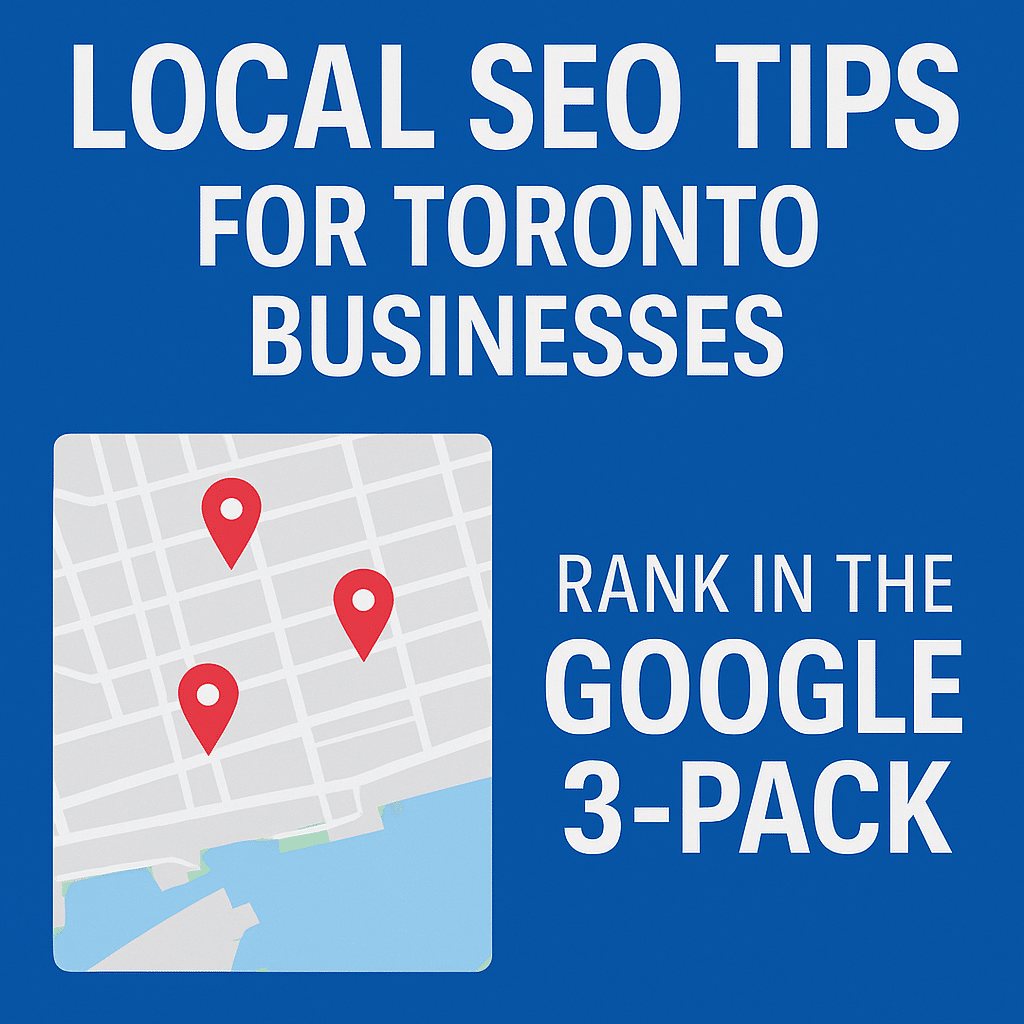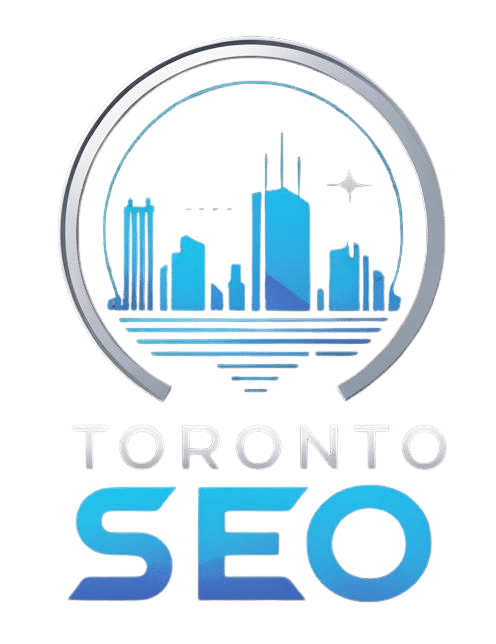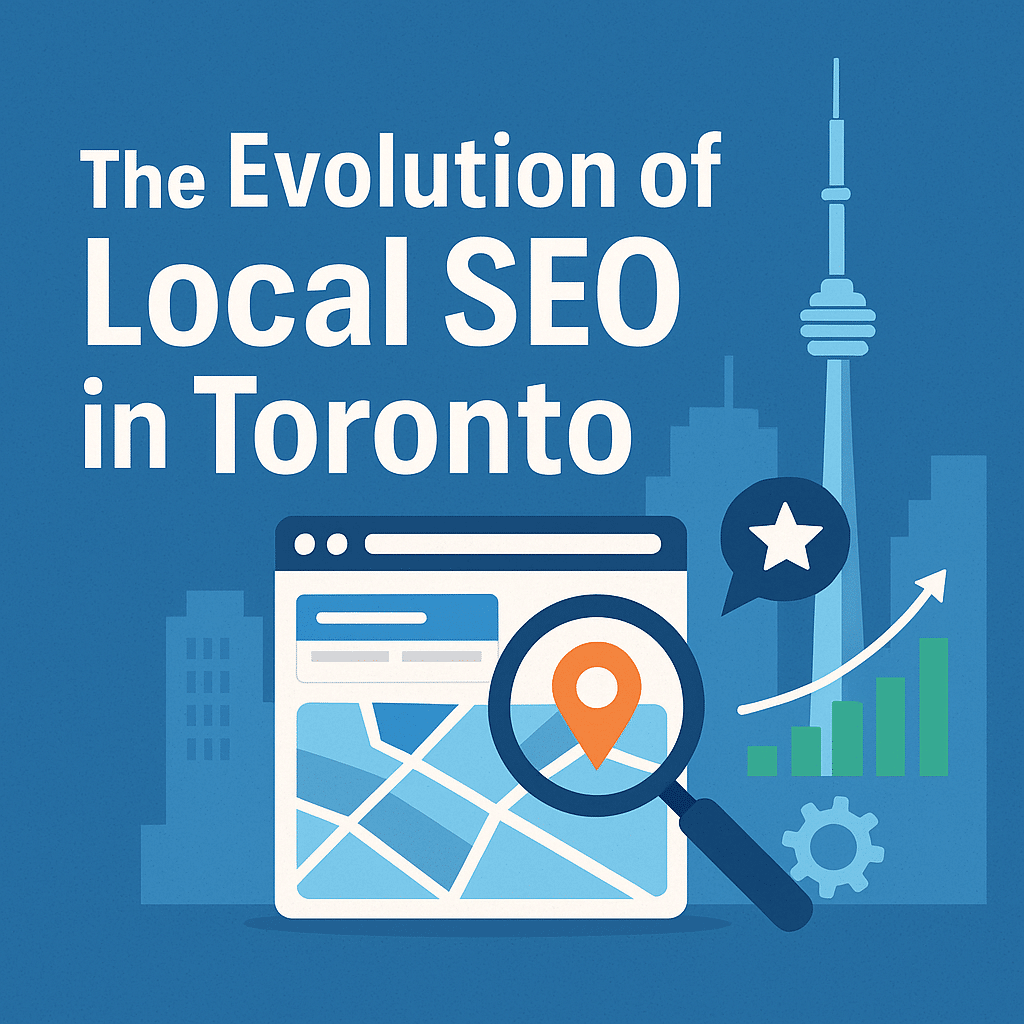Local SEO in Toronto has transformed drastically over the past decade. What once involved simple keyword stuffing and directory listings has evolved into a complex, data-driven discipline that blends AI, user experience, and hyper-local engagement. For Toronto businesses, staying ahead means adapting to constant algorithm updates, changing consumer behavior, and the unique dynamics of a competitive metropolitan market.
In this guide, we’ll explore how local SEO in Toronto has evolved, the latest strategies that work, and how to future-proof your business visibility online.

1. The Shift from Keywords to Search Intent
Early local SEO efforts in Toronto were all about cramming “Toronto” into every heading, title, and meta tag. Today, Google’s AI-driven algorithms focus on understanding user intent rather than just keyword density.
For example, when someone searches “best brunch near Kensington Market”, Google understands they’re looking for restaurants with strong reviews, proximity, and relevant menus—not just sites with the right keywords.
What to Do in 2025:
Focus on semantic keyword optimization—use natural, conversational phrases.
Include location-rich content tied to landmarks, neighborhoods, and events.
Build FAQ sections targeting common search questions in Toronto.
2. Google Business Profile Is Now the Cornerstone
For Toronto businesses, your Google Business Profile (GBP) is as important—if not more important—than your website for local discovery.
Google now integrates GBP with Maps, AI-powered Q&A, and even local shopping results. Businesses with frequent updates, high-quality images, and active review responses dominate the local pack.
Pro Tip:
Post weekly updates tied to Toronto-specific happenings (e.g., “Patio Season Now Open on Queen Street West” or “Special TIFF Week Menu”).
3. Mobile-First Indexing & Localized User Experience
With over 70% of local searches happening on mobile, Google has made mobile-first indexing the default. That means your Toronto SEO performance heavily depends on mobile speed, design, and usability.
Action Items:
Ensure your website loads in under 3 seconds.
Use click-to-call and tap-friendly navigation for mobile visitors.
Include structured data for addresses, hours, menus, and events.
4. Voice Search & Conversational SEO
Voice search adoption in Toronto is booming, thanks to smart speakers, Siri, and Google Assistant. Instead of typing “dentist Toronto emergency”, people now ask, “Hey Google, where’s the nearest emergency dentist in Toronto?”
Voice Search Optimization Tips:
Use long-tail, question-based keywords.
Build content that answers “who,” “what,” “where,” and “how” queries.
Keep answers concise so Google can use them in voice snippets.
5. Review Signals Are More Powerful Than Ever
In 2025, Google’s local ranking factors put heavy weight on review quantity, recency, and quality.
A Toronto restaurant with 200+ recent, positive reviews will likely outrank a competitor with 30 outdated reviews—even if the menu and pricing are similar.
Toronto-Specific Tactics:
Actively request reviews after events, meals, or services.
Respond to every review, especially negative ones, with professionalism.
Encourage customers to mention location-specific keywords in their reviews.
6. AI-Generated & Hyper-Localized Content
AI has made it easier to create location-targeted content at scale. A Toronto law firm, for example, can now publish unique pages for “Family Lawyer in North York”, “Family Lawyer in Scarborough”, and “Family Lawyer in Etobicoke”—each with tailored local info.
Best Practices:
Combine AI speed with human editing for accuracy and tone.
Include local statistics, landmarks, and seasonal references.
Keep content authentic and brand-consistent.
7. The Rise of Zero-Click Searches
Toronto searches are increasingly answered directly on Google without the user clicking a website.
Featured snippets, knowledge panels, and “People Also Ask” boxes dominate the first page.
Solution:
Target featured snippet opportunities by structuring your content with bullet points, tables, and Q&A formats.
Use schema markup to give Google more structured data.
8. Geo-Fencing & Local Ads Integration
Paid search is blending with local SEO. Geo-fencing allows businesses to target ads to specific Toronto neighborhoods, event venues, or even competing businesses.
Example:
A Toronto coffee shop could target ads to people attending the Distillery District Christmas Market.
9. Social Media Signals Are Gaining Weight
While Google denies direct ranking influence, social media activity indirectly impacts local SEO by boosting brand searches and engagement.
Toronto Tip:
Use Instagram and TikTok trends tied to local events, slang, and humor to drive search interest.
10. Future-Proofing Your Local SEO in Toronto
The next wave of Toronto SEO will be shaped by:
AI-powered personalization (results tailored to individual search history)
Augmented reality local experiences
Eco-conscious search preferences (e.g., “sustainable clothing Toronto”)
Key Takeaway:
To stay competitive, Toronto businesses need continuous optimization, multi-platform presence, and data-driven decision-making.
External Links for Authority
Internal Links for Your Site
FAQs
1. What is local SEO for Toronto businesses?
Local SEO is the practice of optimizing your online presence to rank higher in Toronto-specific searches on Google, Maps, and other platforms.
2. How long does it take to see local SEO results?
Most Toronto businesses see improvements in 3–6 months, depending on competition and effort.
3. Is Google Business Profile enough for local SEO?
No. GBP is critical, but it should be part of a holistic strategy that includes website optimization, reviews, content, and backlinks.


